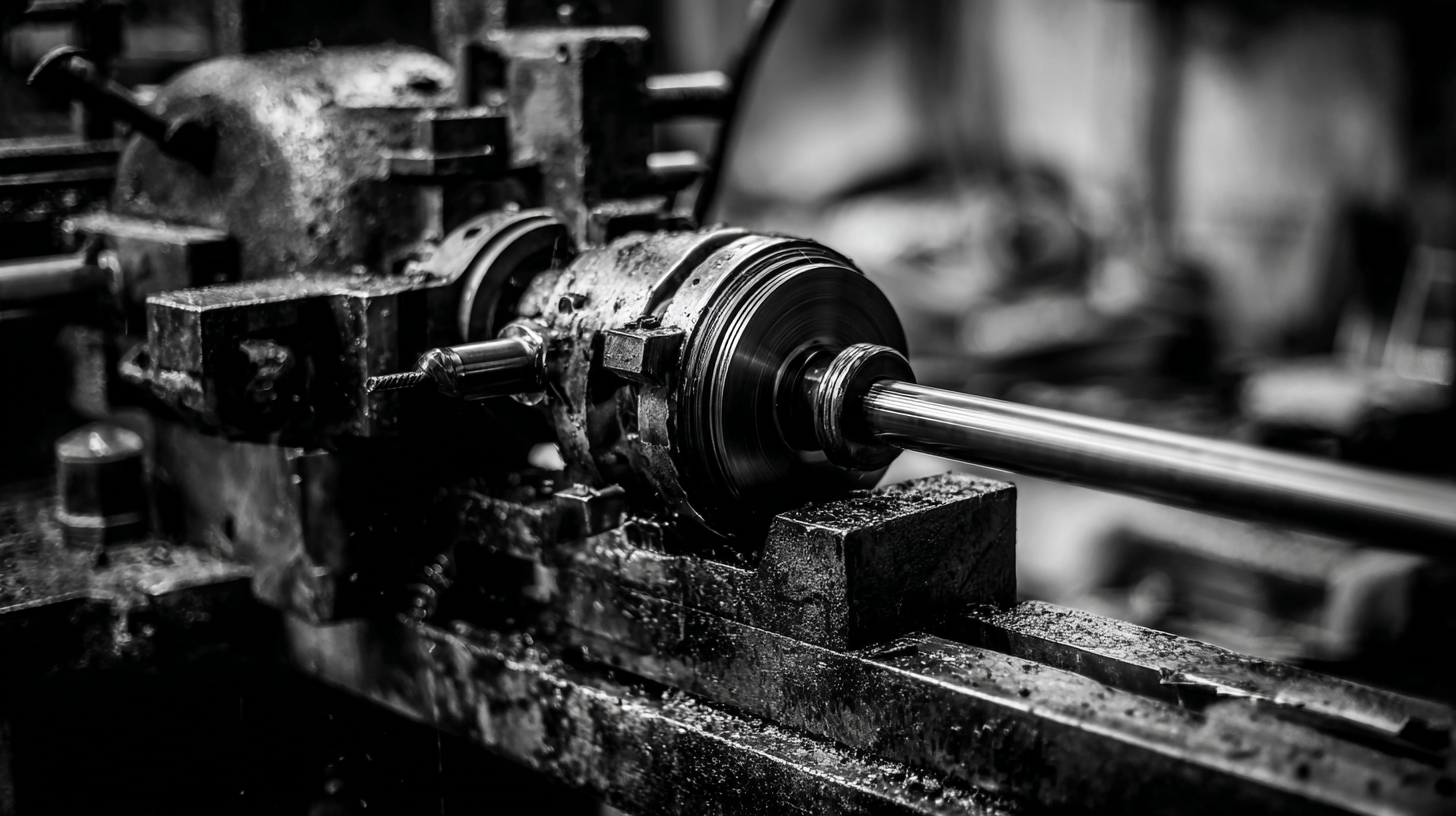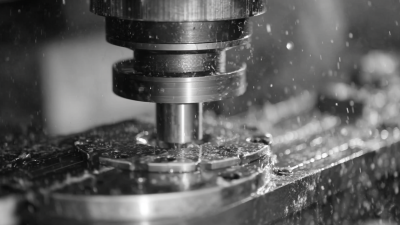The Ultimate Guide to Choosing the Best Glass Cutting Machine for Your Projects
When embarking on any glass-related project, selecting the right tool can make all the difference, and a high-quality Glass Cutting Machine is essential for achieving precision and efficiency. With a myriad of options available on the market today, it can be overwhelming to determine which machine best fits your specific needs. This comprehensive guide aims to simplify your decision-making process by offering key insights and practical tips for choosing the ideal glass cutting machine tailored to your projects. Whether you're a seasoned professional or a DIY enthusiast, understanding the various features, types, and functionalities of glass cutting machines will empower you to make an informed choice. Join us as we delve into the essential elements that contribute to effective glass cutting and help you select the perfect machine that enhances your craft and meets your project requirements.
Key Factors to Consider When Selecting a Glass Cutting Machine
When selecting a glass cutting machine for your projects, it's imperative to consider several key factors that can greatly influence both the efficiency and precision of your cuts.
Firstly, the cutting method is paramount; machines typically utilize manual, computerized, or waterjet cutting techniques. According to a recent industry report by MarketsandMarkets, the global glass cutting machine market is projected to reach $1.2 billion by 2026, driven by a growing demand for automation and precision in glass fabrication. Understanding the specific needs of your project will help determine which cutting method is most suitable.
Another critical factor is the thickness of glass the machine can handle, as this directly affects the versatility of the equipment. Most commercial glass cutting machines can process glass ranging from 1 mm to over 25 mm thick, catering to various applications in sectors like construction and automotive. Additionally, consider the machine’s cutting speed—an essential specification that influences productivity. Data from IBISWorld indicates that businesses that invest in higher-speed cutting technology can improve operational efficiency by up to 30%. Ensuring that these features align with your project requirements can lead to superior results and increased profitability.
Top Features to Look for in a High-Quality Glass Cutting Tool
When selecting a glass cutting machine, several key features should be prioritized to ensure efficient and precise cuts. First and foremost, the cutting mechanism is crucial; look for machines with high-quality diamond blades or wheels, as they provide the best results on various glass thicknesses. A machine with adjustable cutting depth can also enhance versatility, allowing you to work with different glass types without compromising performance.
Another important aspect is the stability and build quality of the machine. A sturdy frame minimizes vibrations during operation, leading to cleaner cuts and reducing the risk of breakage. Additionally, ease of use is essential; features like ergonomic handles, user-friendly controls, and precise alignment capabilities can significantly improve your cutting experience. Lastly, consider the machine's safety features, such as blade guards or automatic shutoff systems, which can protect users during operation and ensure safer workmanship.
The Ultimate Guide to Choosing the Best Glass Cutting Machine for Your Projects
| Feature |
Description |
Importance |
| Type of Cutter |
Manual, Electric, or CNC |
Medium |
| Cutting Thickness |
Up to 25 mm or more |
High |
| Cutting Speed |
Varies from 5 to 30 m/min |
High |
| Ease of Use |
User-friendly design |
High |
| Precision |
Accuracy in cuts |
Very High |
| Durability |
Materials used in construction |
High |
| Safety Features |
Shielding, emergency stops |
Very High |
| Warranty |
Period of manufacturer support |
Medium |
Essential Tips for Maintaining Your Glass Cutting Machine
Maintaining your glass cutting machine is crucial for ensuring precision and longevity in your projects. The first step is regular cleaning. Dust and glass particles can accumulate quickly, affecting the performance of both the blade and the machine itself. According to industry reports, machines that are cleaned after every few uses tend to maintain their cutting efficiency up to 30% longer compared to those that are neglected. It’s advisable to use a microfiber cloth and non-abrasive cleaners to avoid scratching the surface of your machine and blades.
Another essential maintenance tip is regular inspection of the blade. A dull blade not only compromises the quality of your cuts but also increases the risk of breakages and accidents. Reports suggest that routinely replacing blades based on usage—every 20 to 30 hours of cutting activity—can significantly improve cutting precision and reduce material wastage. Furthermore, lubricating movable parts as per the manufacturer’s guidelines facilitates smoother operation and extends the lifespan of your machine. User engagement in maintenance practices often correlates with improved end results in glass cutting projects.
Comparative Analysis of Manual vs. Automatic Glass Cutters
When it comes to cutting glass, choosing between manual and automatic glass cutters greatly impacts the efficiency and precision of your projects. Manual glass cutters offer the advantage of hands-on control, enabling artisans to execute intricate cuts with skill and experience. However, this method requires a certain level of expertise and can be time-consuming, especially for large-scale projects. Manual cutters are often more affordable and may be suitable for hobbyists or those working on smaller tasks.

On the other hand, automatic glass cutters represent an evolution in cutting technology, providing speed and consistency that can be crucial in professional settings. These machines automate the cutting process, reducing the risk of human error and enhancing production rates. Recent advances have shown promise in areas such as image processing and automated assessments, paralleling the benefits of using automatic glass cutters. Users can expect not only higher accuracy but also the ability to handle complex designs with ease, making them ideal for commercial applications where uniformity is essential. In conclusion, the choice between manual and automatic cutters should be guided by the project’s scale, complexity, and required precision.
Common Mistakes to Avoid When Using a Glass Cutting Machine
When using a glass cutting machine, avoiding common mistakes can significantly enhance both safety and efficiency. One of the most frequent errors is not properly preparing the glass surface. Ensure it is clean, free of dust, and positioned securely before starting the cutting process. A stable setup reduces the risk of chipping or cracking the glass, leading to more precise cuts and less waste.
Another mistake to dodge is applying uneven pressure while cutting. Operators should maintain consistent pressure and speed across the entire length of the cut. Uneven application can result in jagged edges or even breakage of the glass. Additionally, neglecting to use the right cutting tool for the type and thickness of glass can severely hinder performance. Taking the time to select the correct cutter will not only improve the quality of the cut but also prolong the life of the machine. By being aware of these common pitfalls, glass cutting can become a much smoother and more successful process.


Home
About Us
Products
UPVC PVC Window Machine
Aluminum Window Machine
Glass Cutting Machine
Glass Edging Machine
Insulating Glass Machine
Glass lifting machine
Glass Washing Machine
Glass Laminating Machine
Glass Sandblasting Machine
Glass Drilling Machine
CNC Glass Working Center
CNC Non-Metal Cutting Machine
The Other Glass Machinery
Application
Download
News
Contact Us








